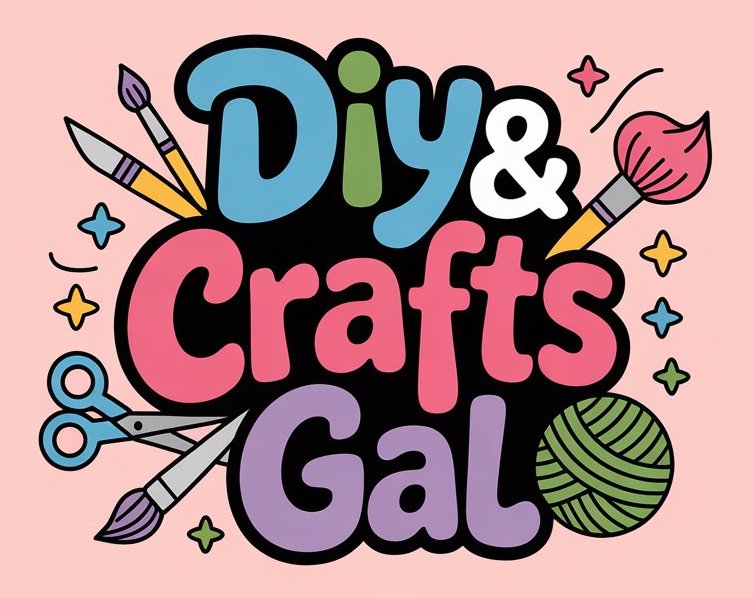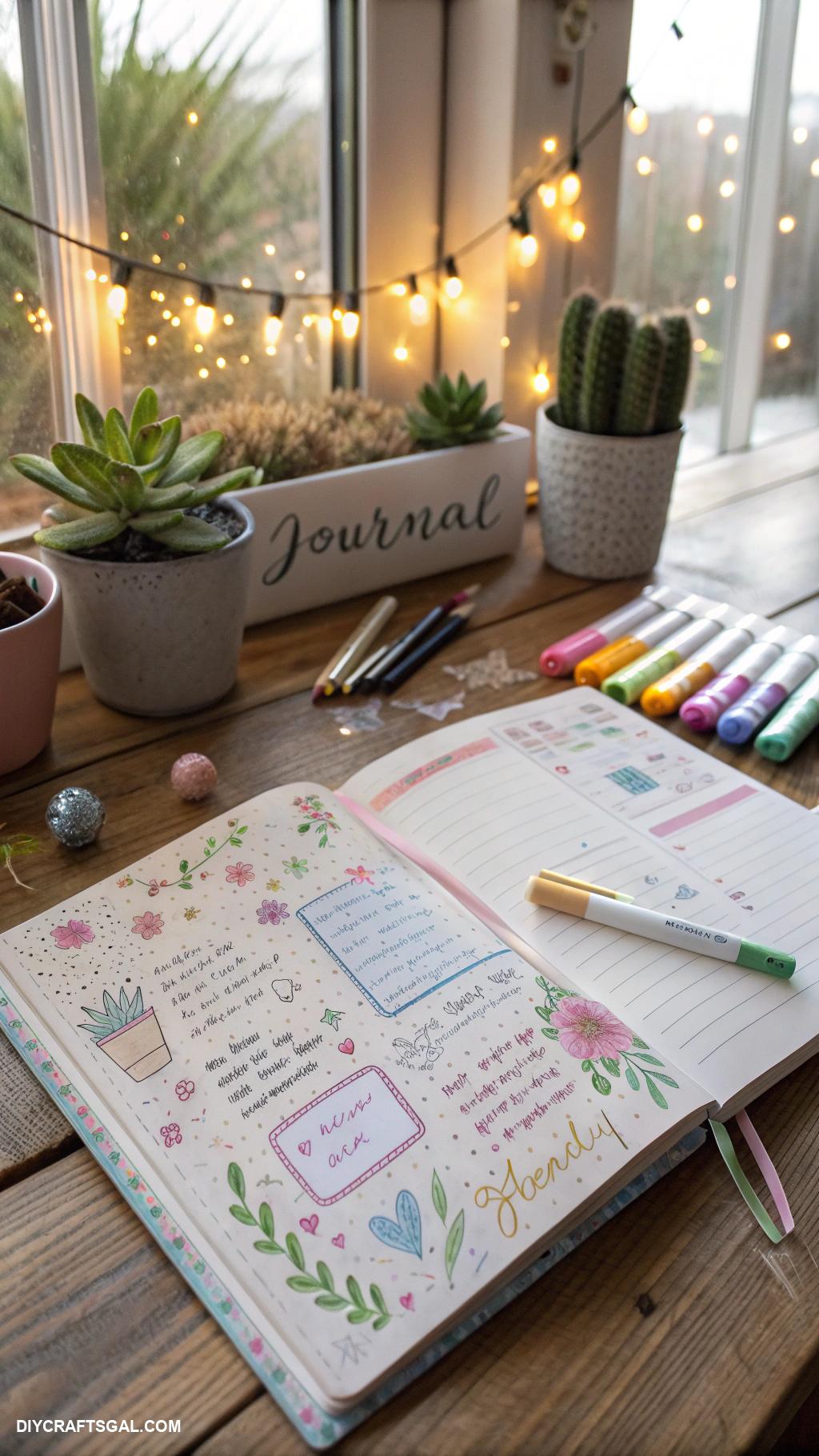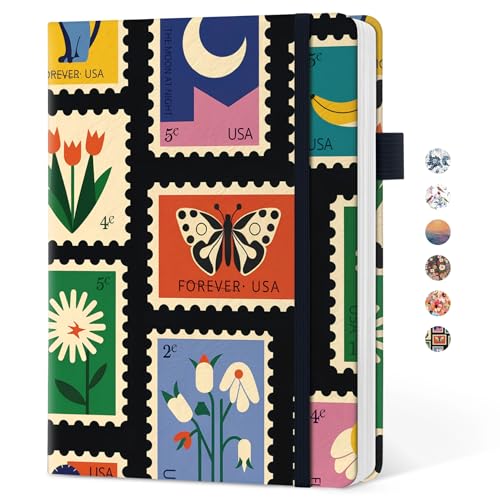How to Start Journaling: A Beginner’s Guide to this Creative and Reflective Habit
We may earn a commission through all links on this website. As an Amazon Associate, we earn from qualifying purchases.
As makers and crafty ladies, we’re no strangers to getting our hands dirty, experimenting with new techniques, and bringing our ideas to life. But amidst the chaos of projects, deadlines, and inspiration, it’s easy to lose sight of our own creative voice and vision.
That’s where journaling comes in – a simple yet powerful tool that can help you tap into your inner artist, clarify your thoughts, and fuel your DIY and crafting passions. By committing your ideas, observations, and musings to paper, you’ll not only cultivate a deeper understanding of yourself and your creative process but also unlock a world of inspiration, innovation, and self-expression.
In this article, we’ll explore the benefits of journaling for DIY and crafting enthusiasts, and provide practical tips and prompts to get you started on this transformative journey.
Unleashing Your Creativity: How Journaling Can Revolutionize Your DIY and Crafting Journey
Choosing the Right Journal
When it comes to starting a journaling practice, one of the most crucial decisions you’ll make is choosing the right journal. This may seem like a small detail, but trust us, it can make a huge difference in your overall experience. A journal that feels comfortable and inspiring can help you stay committed to your practice, while one that’s awkward or unappealing can quickly lead to abandonment.
To find the perfect journal for you, consider the type of writing you plan to do. If you’re a sketcher or artist, look for a journal with high-quality paper that can handle your medium of choice.
If you’re a writer, opt for a journal with a smooth, acid-free paper that won’t bleed or feather. You may also want to think about the size of the journal – do you prefer a compact, portable option or a larger, more spacious one?
Consider the binding type – do you prefer a sewn, lay-flat binding or a glued binding? And don’t forget about the cover – do you like a journal with a plain, unassuming cover or one with a decorative design or inspiring quote?
Once you’ve thought through these factors, you can start browsing online or in-store to find the perfect journal for your unique needs and preferences.
Essential Tools for Journaling
As you embark on your journaling journey, it’s essential to have the right tools at your disposal. The good news is that you don’t need to break the bank or invest in a plethora of fancy supplies to get started. In fact, some of the most effective tools for journaling are the ones you likely already have at home.
A dedicated journal or notebook is the foundation of your journaling practice, and you can choose from a wide range of options to suit your style and preferences. Look for a journal with a sewn binding that allows the pages to lie flat when open, making it easier to write and draw.
You’ll also want to consider the type of paper and its texture, as well as the journal’s size and layout. Some popular options include dot-grid notebooks, which provide a subtle grid pattern for organizing your thoughts, and travel-sized journals, which are perfect for jotting down notes on-the-go.
In addition to your journal, you’ll want to stock up on a few basic writing utensils. A good quality pen is essential for journaling, as it allows you to express yourself freely without worrying about smudging or bleeding. Look for a pen with a comfortable grip and a smooth flow of ink, and consider investing in a few different colors.
Different Journaling Styles to Explore
As you embark on your journaling journey, it’s essential to explore different journaling styles to find what resonates with you. One popular style is bullet journaling, which involves creating a customizable and flexible system using bullet points, symbols, and doodles to organize and track your thoughts, tasks, and goals.
Another style is art journaling, which combines traditional art techniques with journaling to express emotions, tell stories, and explore creativity. If you’re more of a writer, you might enjoy freewriting, where you write whatever comes to mind without stopping or worrying about grammar or spelling.
Alternatively, you could try morning pages, a technique popularized by Julia Cameron, where you write three pages of longhand writing first thing in the morning to clear your mind and set intentions for the day. For those who prefer a more structured approach, there’s the five-minute journal, which involves dedicating just five minutes each day to writing down your thoughts, gratitudes, and goals.
You might also consider digital journaling, where you use a note-taking app or digital tool to record your thoughts and reflections. And finally, there’s the prompt-based journaling, where you use guided prompts or exercises to explore specific themes, such as mindfulness, self-care, or personal growth.
Setting a Regular Journaling Routine
Setting a regular journaling routine is a crucial step in establishing a consistent journaling habit. To do this, start by designating a specific time and place for journaling each day. This could be first thing in the morning, right before bed, or during your lunch break. Consistency is key, so choose a time that works for you and stick to it.
Next, decide on a journaling schedule that suits your lifestyle. Some people prefer to journal daily, while others prefer to set aside time a few times a week. Experiment with different schedules to find what works best for you.
Additionally, consider creating a journaling ritual to signal the start of your journaling practice. This could be as simple as lighting a candle, sipping a cup of tea, or playing soothing music. By creating a calming and inviting atmosphere, you’ll be more likely to establish a consistent routine.
Another important aspect is to set aside a specific amount of time for journaling, say 10-15 minutes, and try to commit to it. Over time, you’ll find that journaling becomes a cherished part of your daily routine, allowing you to process your thoughts, reflect on your experiences, and gain valuable insights into your life.
Incorporating DIY Elements into Your Journal
Incorporating DIY elements into your journal can be a fantastic way to make your writing experience even more personal and meaningful. This can involve adding embellishments such as stickers, washi tape, and die-cut shapes to give your journal a unique visual flair. You can also experiment with mixed media techniques like collaging, painting, and drawing to add texture and depth to your pages.
For a more subtle approach, consider adding hand-stamped designs or handwritten quotes to create a sense of continuity throughout your journal. Another idea is to incorporate ephemera like ticket stubs, postcards, and other small memorabilia to add a touch of nostalgia and whimsy to your journal.
The key is to experiment and have fun with it – don’t be afraid to try new things and make mistakes! By incorporating DIY elements, you can turn your journal into a one-of-a-kind reflection of your personality and style.
Prompts and Ideas to Get You Started
To get you started on your journaling journey, it’s essential to have a solid foundation of prompts and ideas to draw from. One of the most effective ways to begin is by exploring different themes and categories that resonate with you.
For instance, you might want to start with prompts that focus on gratitude, such as writing down three things you’re thankful for each day or describing a moment when someone showed you kindness.
Alternatively, you could delve into creative expression by writing short stories, poetry, or even doodling and drawing. You can also try using sensory prompts, like describing a favorite memory or writing about the sights, sounds, and smells of your daily commute.
Another approach is to explore your goals and aspirations, by writing about what you hope to achieve in the next month, year, or five years.
You can even use quotes or lyrics as inspiration, or try freewriting, where you simply write whatever comes to mind without stopping or worrying about grammar or spelling.
Having a variety of prompts and ideas at your disposal will help you stay motivated and engaged, and before you know it, journaling will become an enjoyable and meditative part of your daily routine.
Tips for Maintaining Your Journaling Habit
As you begin your journaling journey, it’s essential to establish a routine that works for you and helps you maintain consistency. One of the most significant keys to success is to schedule a specific time and place for journaling each day. This could be first thing in the morning, right before bed, or during your lunch break – whatever works best for your schedule. Make a commitment to yourself to journal at the same time every day, and try to stick to it as much as possible.
Another crucial tip is to create a conducive environment that inspires creativity and relaxation. This might mean lighting a candle, playing soothing music, or finding a cozy spot outdoors. By establishing a consistent routine and creating a peaceful atmosphere, you’ll be more likely to stay motivated and engaged in the journaling process.
Another important aspect of maintaining your journaling habit is to keep your journaling space organized and visually appealing. You might also want to create a system for categorizing and storing your journal entries, such as using tabs, stickers, or color-coding.
By keeping your journaling space tidy and visually appealing, you’ll be inclined to add more to it often!








